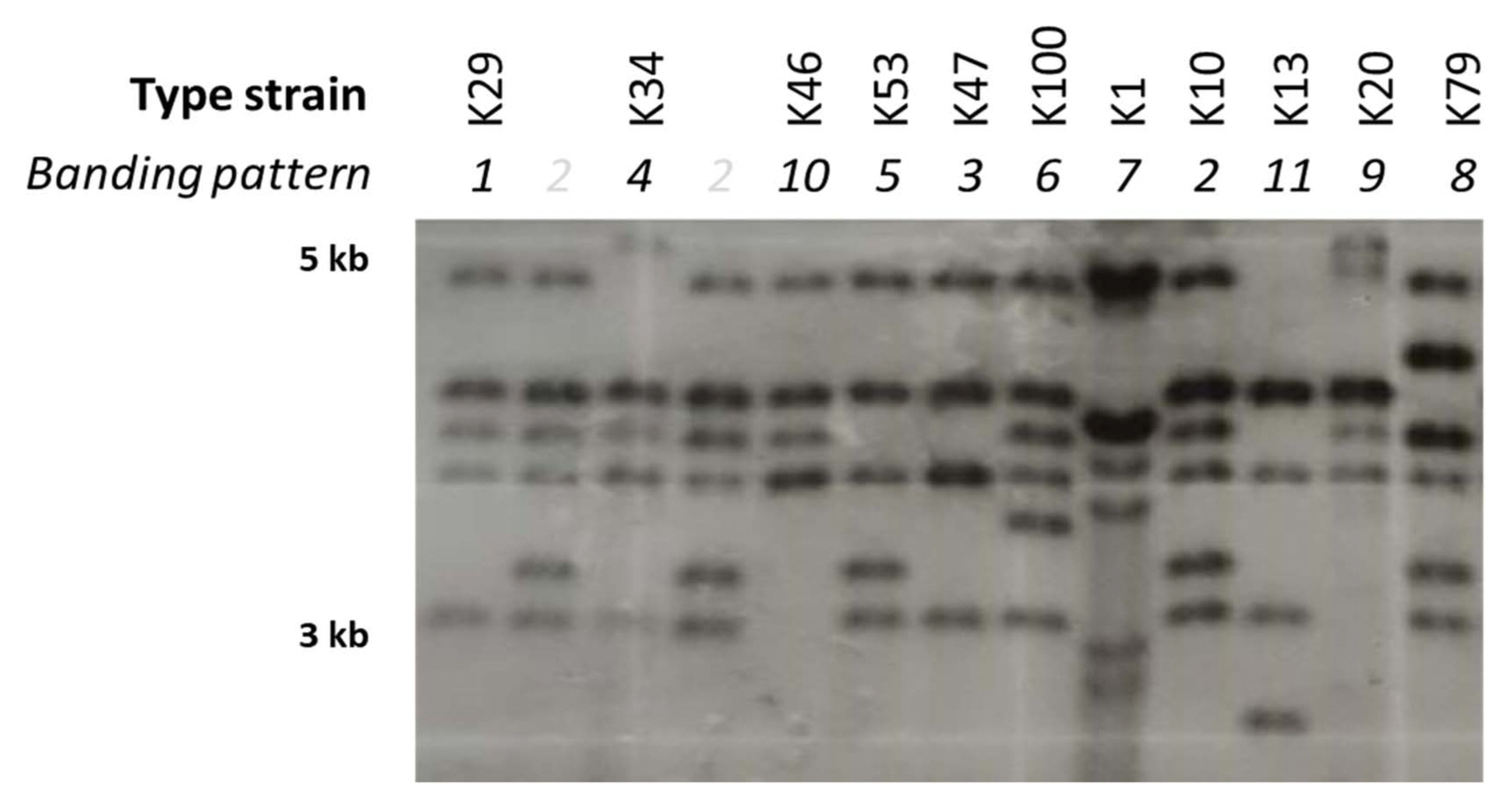Athinuwat, D, Prathuangwong, S, Cursino, L and Burr, T 2009.
Xanthomonas axonopodis pv.
glycines soybean cultivar virulence specificity is determined by
avrBs3 homolog
avrXg1
.
Phytopathology. 99:996-1004.


Bernard, RL and Weiss, MG 1973. Qualitative genetics. In: Soybeans: improvement, production, and uses, eds. by BE Caldwell, 117-164. American Society of Agronomy, Madison, WI, USA.
Bradbury, JF 1984. Genus II. Xanthomonas Dowson 1939. 187 In: Bergey’s manual of systematic bacteriology, 1:eds. by NR Krieg and JG Holt, 199-210. Williams & Wilkins, Baltimore, MD, USA.
Constantin, EC, Cleenwerck, I, Maes, M, Baeyen, S, Van Malderghem, C, De Vos, P and Cottyn, B 2016. Genetic characterization of strains named as
Xanthomonas axonopodis pv.
dieffenbachiae leads to a taxonomic revision of the
X. axonopodis species complex.
Plant Pathol. 65:792-806.

Hartman, GL, Rupe, JC, Sikora, EJ, Domier, LL, Davis, JA and Steffey, KL 2016. Compendium of soybean diseases and pests. 5th ed. American Phytopathological Society, St. Paul, MN, USA.
Hartwig, EE and Lehman, SG 1951. Inheritance of resistance to bacterial pustule disease in soybeans. Agron J. 43:226-229.
Hokawat, S and Rudolph, K 1991. Variation in pathogenicity and virulence of strains of
Xanthomonas campestris pv.
glycines, the incitant of bacterial pustule of soybean.
J Phytopathol. 131:73-83.

Hong, S-J, Kim, Y-K, Jee, H-J, Lee, B-C, Yoon, Y-N and Park, S-T 2010 Selection of bactericides for controlling soybean bacterial pustule.
Res Plant Dis. 16:266-273 (in Korean).

Hong, S-J, Kim, Y-K, Jee, H-J, Shim, C-K, Kim, M-J, Park, J-H, Han, E-J and Lee, B-C 2011 Influence of disease severity of bacterial pustule caused by
Xanthomonas axonopodis pv.
glycines on soybean yield.
Res Plant Dis. 17:317-325 (in Korean).

Hueck, CJ 1998. Type III protein secretion systems in bacterial pathogens of animals and plants.
Microbiol Mol Biol Rev. 62:379-433.



Hwang, I and Lim, SM 1998. Pathogenic variability in isolates of Xanthomonas campestris pv. glycines
. Korean J Plant Pathol. 14:19-22.
Kaewnum, S, Prathuangwong, S and Burr, TJ 2005. Aggressiveness of
Xanthomonas axonopodis pv.
glycines isolates to soybean and hypersensitivity responses by other plants.
Plant Pathol. 54:409-415.

Kim, J-G, Choi, S, Oh, J, Moon, JS and Hwang, I 2006. Comparative analysis of three indigenous plasmids from
Xanthomonas axonopodis pv.
glycines
.
Plasmid. 56:79-87.


Lee, J and Shin, H 2021. Assessment of future climate change impact on an agricultural reservoir in South Korea.
Water. 13:2125.

Lee, SD 1999. Occurrence and characterization of major plant bacterial diseases in Korea. PhD thesis. Seoul National University, Seoul, Korea.
Moffett, ML and Croft, BJ 1983. In:
Xanthomonas Plant bacterial diseases: a diagnostic guide, eds. by PC Fahy and GJ Persley, 189-228. Academic Press, New York, NY, USA.
Narvel, JM, Jakkula, LR, Phillips, DV, Wang, T, Lee, S-H and Boerma, HR 2001. Molecular mapping of
Rxp conditioning reaction to bacterial pustule in soybean.
J Hered. 92:267-270.


Park, H-J, Han, S-W, Oh, C, Lee, S, Ra, D, Lee, S-H and Heu, S 2008. Avirulence gene diversity of
Xanthomonas axonopodis pv.
glycines isolated in Korea.
J Microbiol Biotechnol. 18:1500-1509.

Rural Development Administration 2012. The agricultural science and technology research and analysis standards. 5th ed. Rural Development Administration, Suwon, Korea. 424.
Sambrook, J, Fritsch, EF and Maniatis, T 1989. Molecular cloning: a laboratory manual. 2nd ed. Cold Spring Harbor Laboratory Press, Cold Spring Harbor, NY, USA. 1546.
Shukla, AK 1994. Pilot estimation studies of soybean (
Glycine max) yield losses by various levels of bacterial pustule (
Xanthomonas campestris pv.
glycines) infection.
Int J Pest Manage. 40:249-251.









 PDF Links
PDF Links PubReader
PubReader ePub Link
ePub Link Full text via DOI
Full text via DOI Full text via PMC
Full text via PMC Download Citation
Download Citation Supplement
Supplement Print
Print




